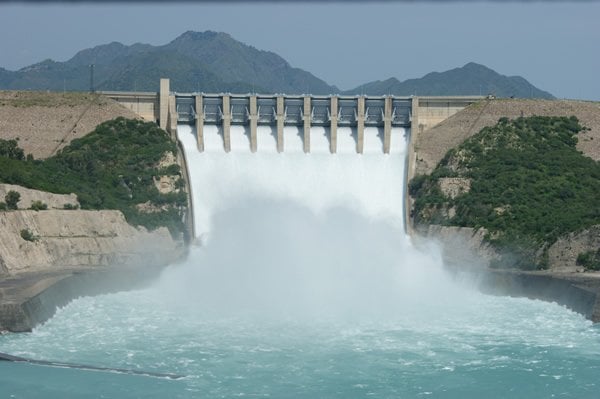This week Water and Power Development Authority (WAPDA) in Pakistan announced that water capacity of the Tarbela Dam, one of Pakistan’s most important dams, has fallen by 30%. WAPDA warned the Senate in Islamabad on Wednesday that while water consumption is increasing in Pakistan, the countries ability to store water is decreasing, urging leaders to build more dams in Pakistan. Activists and concerned citizens in Pakistan have taken to social media to ask if it’s time for Pakistan to build dams.
Why Is it Important for Pakistan to Build Dams?
More than 80 percent of water in Pakistan is considered unsafe. Meanwhile, in 2017, the Pakistan Council of Research in Water Resources (PCRWR) announced that Pakistan would run out of water by 2025.
According to WaterAid, Pakistan is one of the 36 most water-stressed countries in the world. Pakistan is also in the top 10 of countries with the most people living without clean drinking water. Currently, 16 million people in Pakistan have no other option than collecting unsafe water for drinking and cleaning, leading to massive amounts of water-borne disease.
Available water per capita has dropped from 5,600 to 903 cubic meters, as of 2016. At the current levels of consumption, this number is expected to drop to 500 cubic meters per person in the coming years.
With 60% of Pakistan’s population directly involved in the agricultural sphere, up to 95% of Pakistan’s water is used in agriculture. However, it it estimated that 50% of the water directed towards agricultural purposes is lost, due to defects in irrigation systems, including misuse, defective canals, and leaking pipes.
While water supply and storage are shrinking, Pakistan’s population is rapidly growing, placing greater stress on the already taxed water system. Experts believe Pakistan’s existing water policy and systems will be unable to sustain the current levels of growth. Since so many of Pakistan’s citizens rely on agriculture for gainful activity, water scarcity in Pakistan would spell economic disaster and famine. A water crisis could even become an issue of national security, since transboundary water resources have historically been a significant source of tension with nuclear rival India.
The Hisaar Foundation, in partnership with the Asia Foundation, has made a series of five recommendation for improving water safety and security in Pakistan. According to the Asia Foundation, those five priorities are: “improving access to water for the poor and landless; financing the urban and rural water value chain; safeguarding the Indus Basin and its infrastructure; improving water institutions and their management and governance; and building a base for science, technology, and social aspects of water.”
The Asia Foundation also recommends providing financial incentives for smarter water usage in agricultural production. They recommend the government should use a series of tariffs, taxes, and price incentives to encourage farmers to produce crops which require less water.
Pakistan’s most highly produced crops are wheat, rice, cotton, and sugarcane. Although these are agricultural staples, they are also the most water intensive crops on the planet. These crops are hardly drought resistance, so if Pakistan did experience water scarcity, it would could an economic and humanitarian disaster.
Water Economy
The Asia Foundation has also made economic arguments for greater water security and conservation to encourage authorities in Pakistan to build dams. Since agriculture makes up for about 20% of Pakistan’s GDP, while consuming the vast majority of Pakistan’s water resources, better management of water could have a huge impact on GDP. The Asia Foundation estimates that better water management and policy could increase Pakistan’s agricultural GDP from the current $50 billion to $200 billion, annually.
In addition to water scarcity, as well as water-borne disease, Pakistan has also experienced an energy crisis. Despite the powerful Indus River system, Pakistan has barely scratched the surface of hydro energy. It has been estimated that the Indus River system could produce 59,000 megawatts of energy a year.
The water situation may also be impacting the education system, which would eventually have a negative outcome on development and the economy. One in three schools in unable to provide students with clean drinking water, which prevents students from concentrating and also spreads water-borne diseases that prevent children from being able to attend school.
Water-borne diseases, in and of themselves, are delivering a blow to Pakistan’s economy. It has been estimated that water-borne diseases cost Pakistan $1.3 billion each year. 80% of disease in Pakistan is caused by unsafe water, accounting for 40% of deaths. Water-borne diseases include typhoid, tuberculosis, hepatitis, and intestinal parasites.
Pakistan to Build Dams?
Attempts to build dams in Pakistan have been riddled with land conflict, political disagreements, and international disputes with India.
Since it has become clear that water stress is a major issue in Pakistan, efforts have been made for Pakistan to build dams. In recent months, WAPDA has been attempting to build the Diamer-Bhasha Dam. The dam lies between the two provinces Khyber-Pakhtunkhwa (KPK) and Gilgit-Baltistan (GB) which has led to conflict and land disputes. Those who claim to hold ownership over the contested land have even become violent. Each time dam construction commences, locals fire on workers. So far, 12 have been killed at the construction site.
China had originally planned on building the Diamer-Bhasha Dam as part of the China-Pakistan Economic Corridor (CPEC). However, Pakistan rejected the deal last November. Islamabad claimed China’s conditions for the deal were “too strict.” Pakistan announced they would instead be carrying out the planned dam project.
On Monday, Pakistan’s Supreme Court agreed to hear cases on the water shortage in Pakistan, beginning June 7. The hearings will particularly focus on the proposed Kalabagh Dam on the Indus River. The dam could increase Pakistan’s dismall water storage capacity while providing 3,600 megawatts of electricity. In the past, Pakistan’s political parties have been unable to reach an agreement on the dam, a hurdle activists hope the Supreme Court will be able to overcome.




